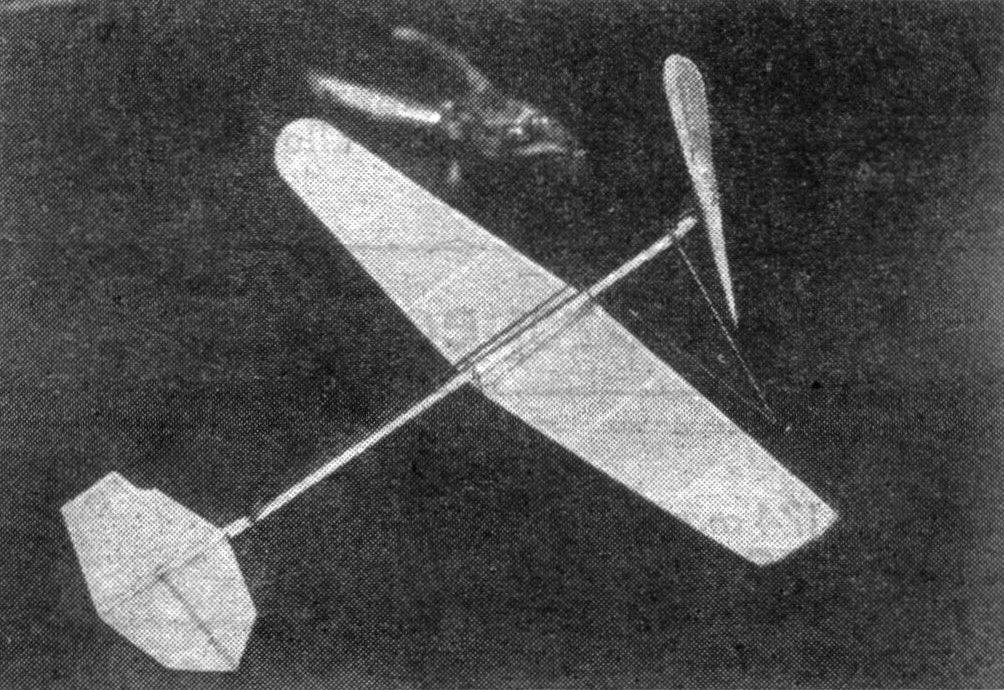|
Make the Daniel R.O.G. Low-Wing BY R. T. Daniel
HERE'S a snappy flying stick model that's been thoroughly tested -- and come through with flying colors! Moreover, the coming of the Winter months always brings greater enthusiasm for these midget craft, for a "flying field" large enough for this plane is available to almost anyone. A space 30 feet square, preferably indoors, is sufficient in which to put the Daniel Low-Wing through its paces. The writer has designed and built several of these models and they have proven to be excellent performers. However, materials must be selected with care, and workmanship must be accurate. WING THE wing spars are made from fairly light 1/16" by 3/64" balsa strips. Taper each spar from the center to the tip so that each measures 1/32" square at the tip. Slightly cut each spar on the outer edge at the center and crack with the fingers so that each piece may go in place on the drawing (see next page). The ribs are flat and are cut from 1/32" balsa. The tip outlines are made by bending to shape a piece of bamboo 1/32" thick by 1/8" wide while applying heat. This bamboo may first be soaked in water for several hours to facilitate bending. After the piece has thoroughly stiffened and cooled, trim it to 1/64" thick and split off two pieces 1/32" wide for the tips. TAIL UNIT THE tail members are attached to a tail boom "X." This is 1/16" square and is tapered (beginning where it joins the motor stick) to 1/16" by 1/32" at the rear end. The tail cross piece, "C," is made of 1 /64" by 1/32" bamboo. The ribs, "B," are made of 1/16" by 3/64" balsa shaped as shown. The paper covering forms the outline of the stabilizer. The fin framework is composed of 1/32" by 3/64" balsa strip. It is covered and then cemented to the side of the tail boom, "X." Attach the tail unit to the motor stick with cement. Give it a very slight positive angle of incidence, just enough to make sure that the rear edge is tucked down a little. A very slight amount of left rudder may be of advantage to help give the turn. PROPELLER AND LANDING GEAR THE propeller is cut from the regular "X" type of block. A point to be observed: Do not round off the blade tips according to the dotted lines until after the prop has been carved, since to do so would change the angle of attack in this part of the blade. The prop shaft is .016" music wire. The wheels are cut from 1/32" light sheet balsa. First mark them out with a compass, then give a good coat of cement on each side. Later, put a drop of cement over the hole on each side where the axle is to go. When dry, cut out. If the cement is put on entirely after the wheel is cut out, the contraction caused by the drying cement will tend to curl up the wheel. The hubs are likewise made of 1/32" light sheet balsa. MISCELLANEOUS SELECT your material for the motor stick carefully. Use hard, straight balsa 1/16" by 1/8" by 6". The ends may be tapered on the bottom side, the amount of taper depending on the weight of the wood. Over-tapering will weaken the stick. The thrust bearing may be cut from 1/64" sheet brass or steel. The model is powered with a loop of 1/32" square brown rubber. Scanned From December 1935 |
